MEASUREMENT BY STRATEGY 2: EXERCISING THEIR CHOICE
Organizations executing this strategy are focused on informing and organizing parents so they can exercise their power of choice. Specifically:
(a) Choosing the school that they believe is the best fit for their children’s needs (within whatever constraints around choice exist in their community), and
(b) Making the myriad array of choices within a school that reflect the needs of their children.
For examples of organizations executing this strategy, please click here.
1. Identify impact agenda
The first step is to clearly articulate the impact agenda of a campaign that key stakeholders agree with and are excited to exercise their power to support. Organizations co-create this agenda in collaboration with the communities they serve. This requires sharing points of view, listening to others, and deep dialogue built on both data and also values. This requires sharing points of view, listening to others, and deep dialogue built not just on data but also values.
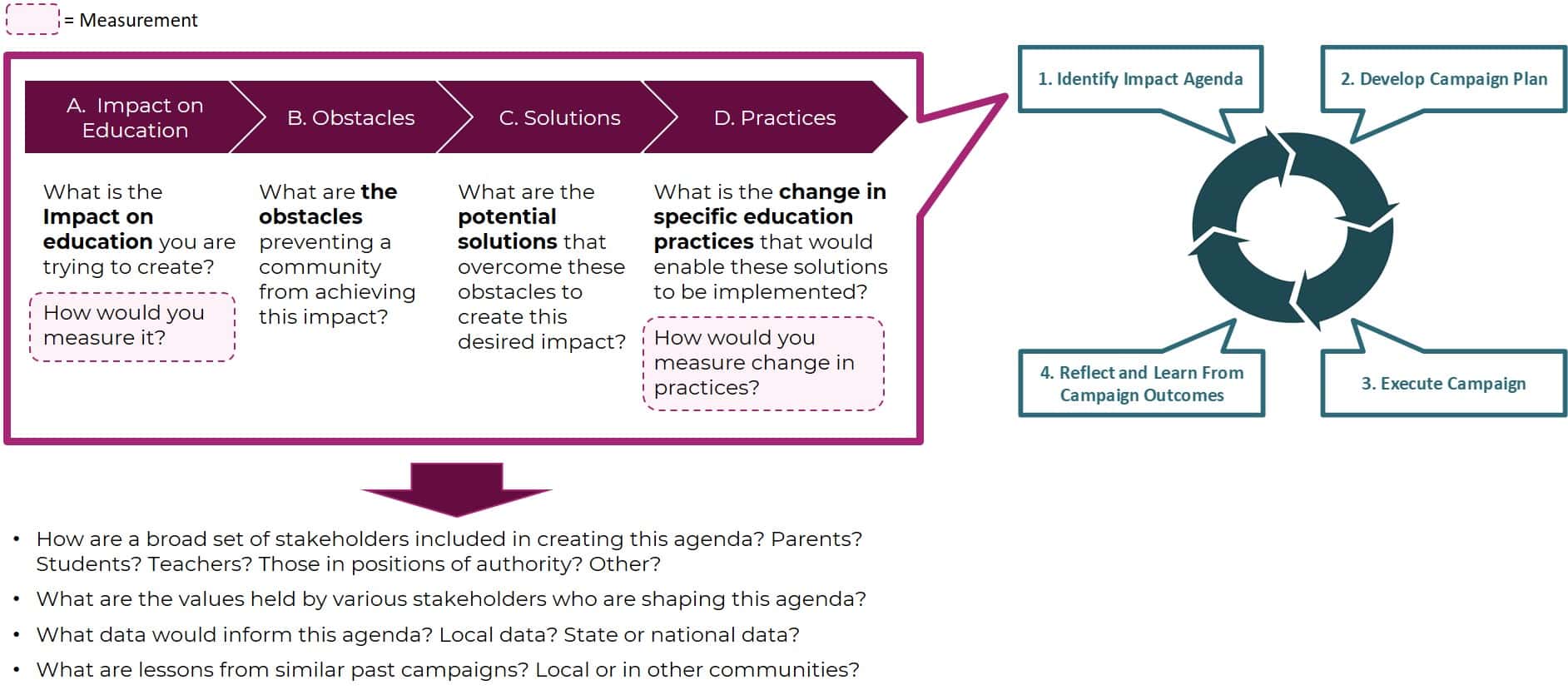
2. Campaign plan
Next, an organization develops a campaign plan, (a) determining what actions and corresponding infrastructure are required, (b) developing a workplan and clear picture of resources required, and (c) assessing any risk or opportunity cost.
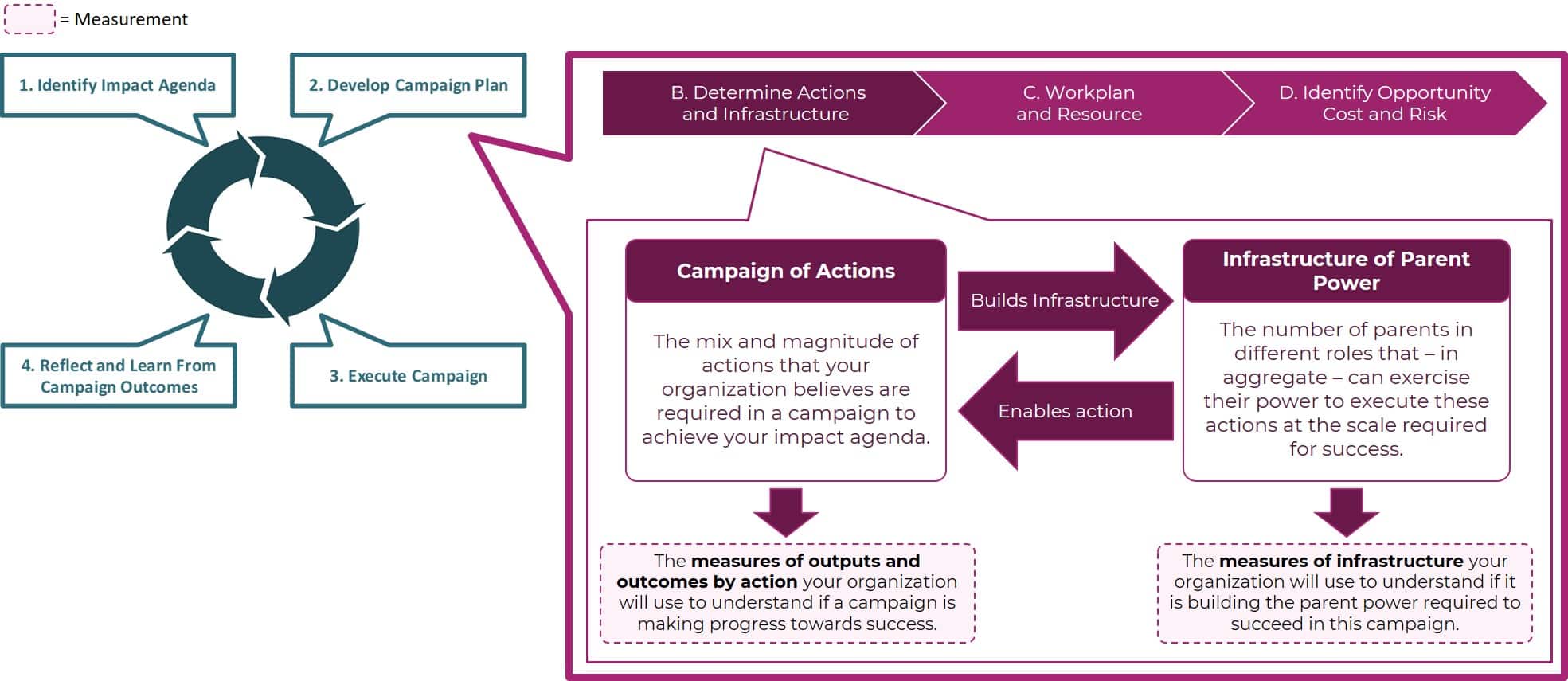
For Strategy 2, parents exercising the power of their choice, the most common actions are:
- Online reach and engagement
- Workshops and trainings
- House meetings
- 1:1 meetings
- Phone Banking
- Canvassing
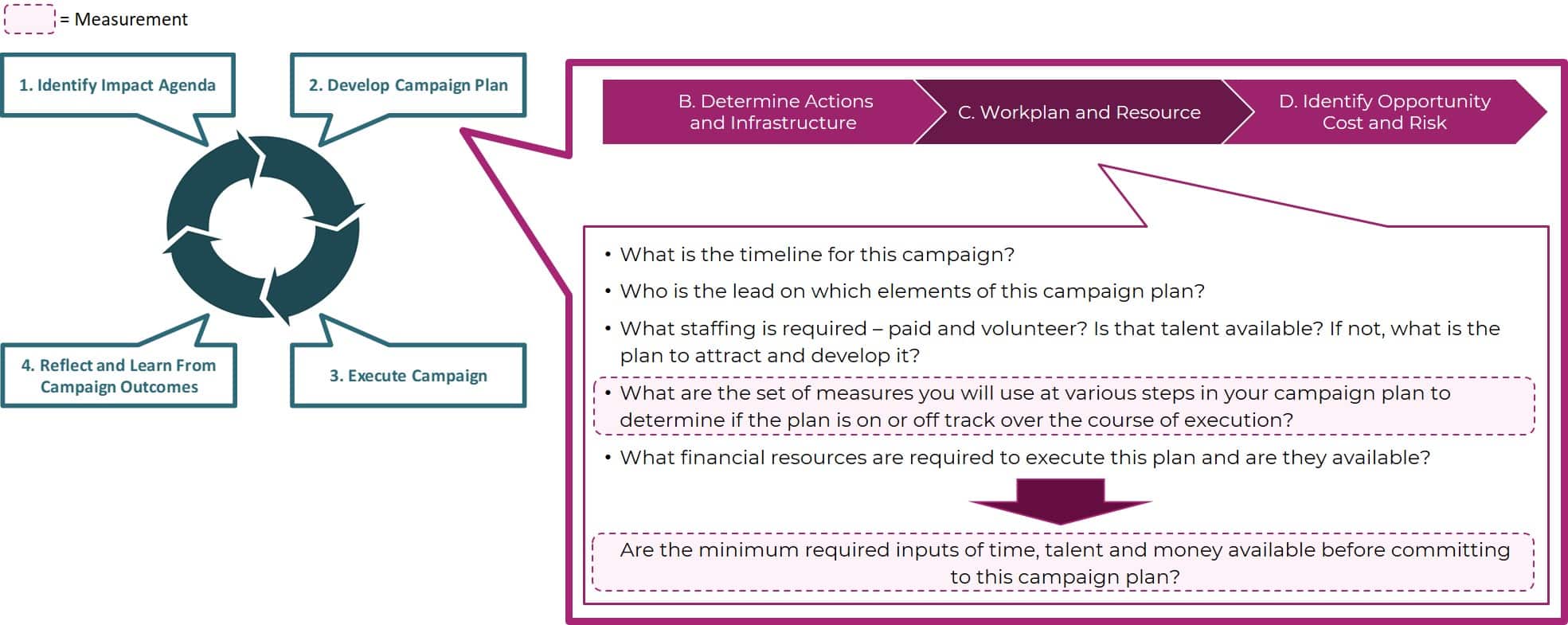
While there may be no significant risk or opportunity cost to a campaign, it is always prudent to reflect on this in planning, especially as by committing to a given campaign, an organization is usually making a choice to NOT do something else with its limited resources… even if just committing to a campaign in one community and not in another.
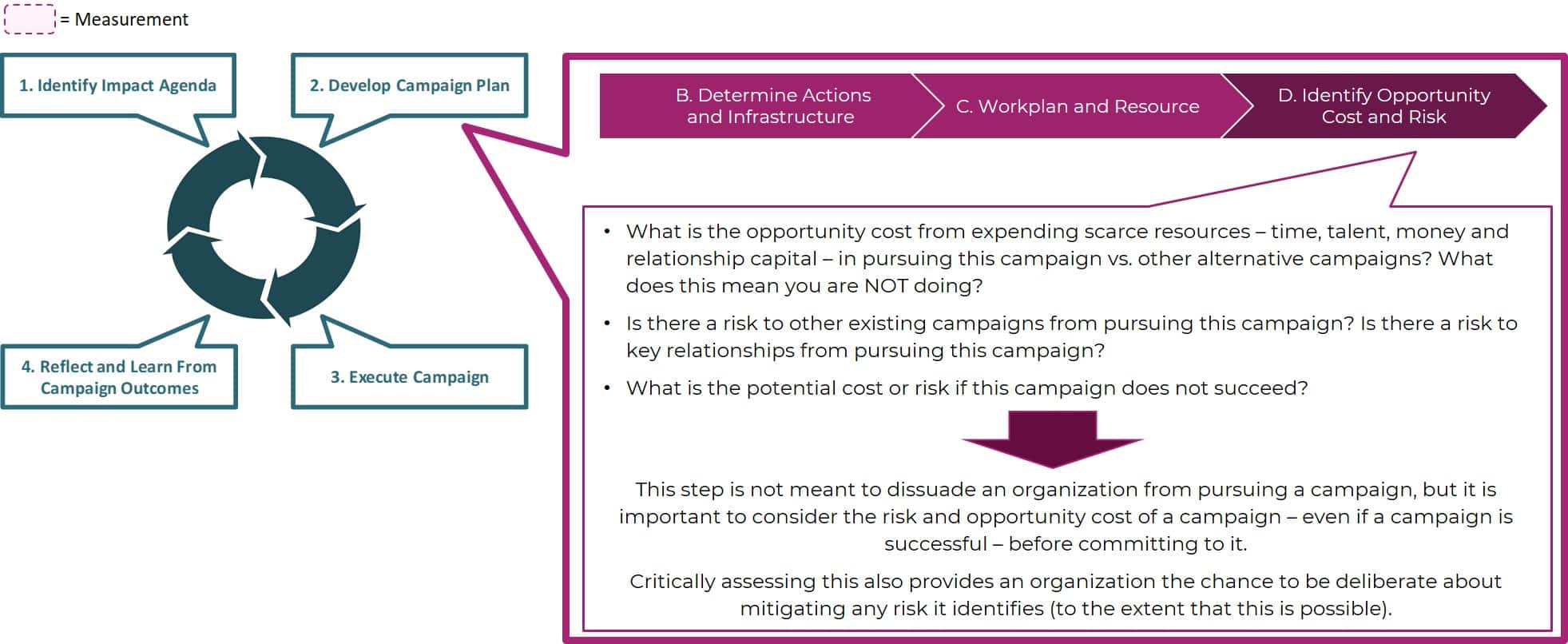
A gut-check before committing
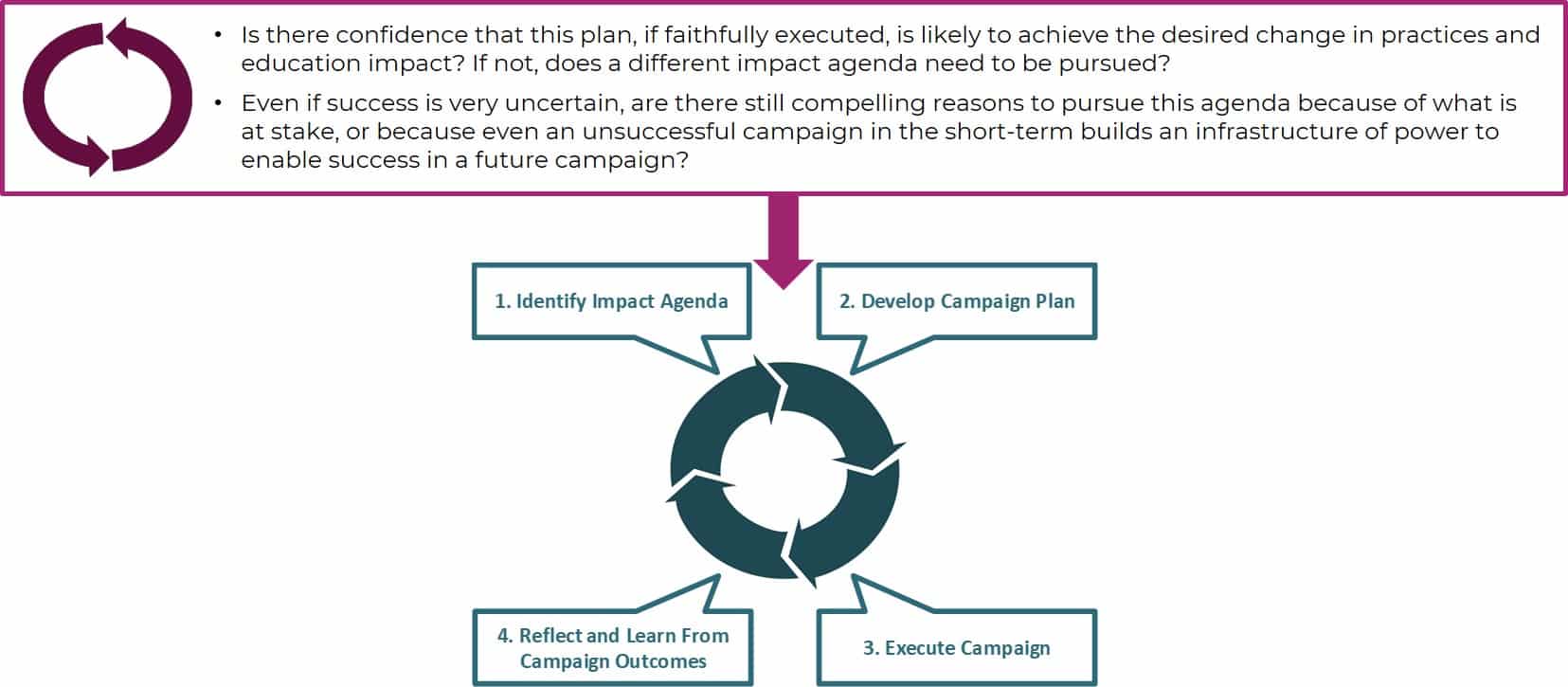
3. Execute campaign

4. Evaluate campaign outcomes
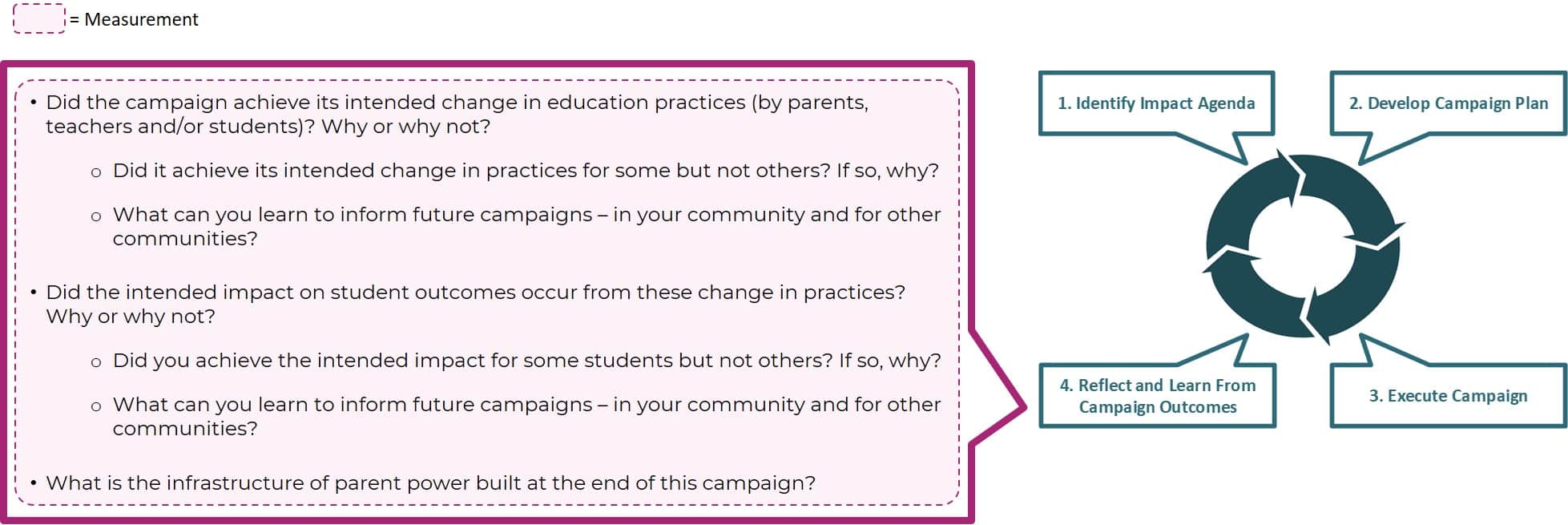
225 Franklin Street, Suite 350
Boston, MA 02110
617.912.8800
This work is licensed under a Creative Commons Attribution-NonCommercial-ShareAlike 2.0 License (CC BY-NC-SA 2.0)
Click Here to learn more.

